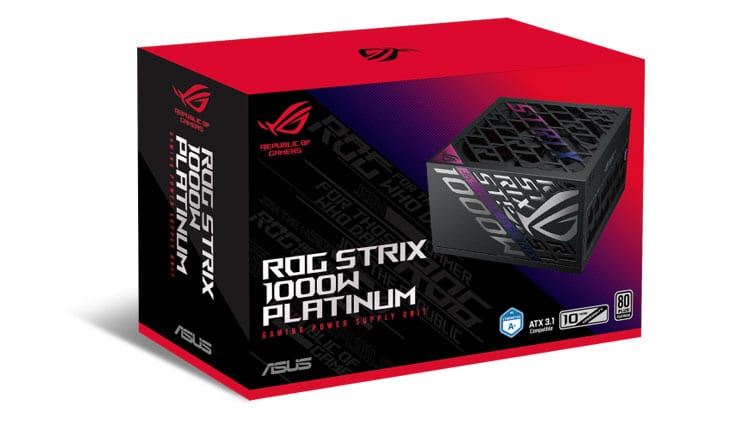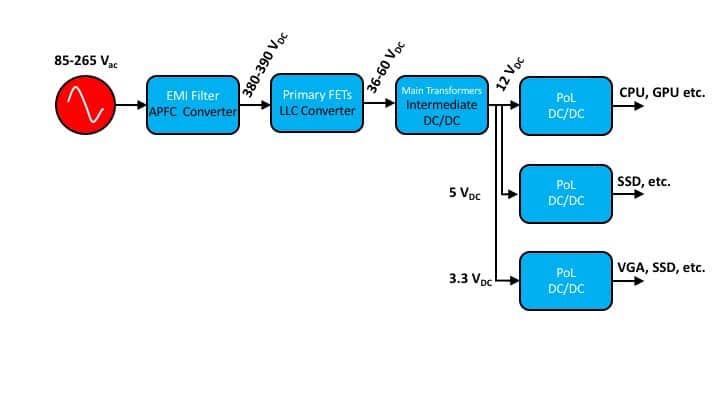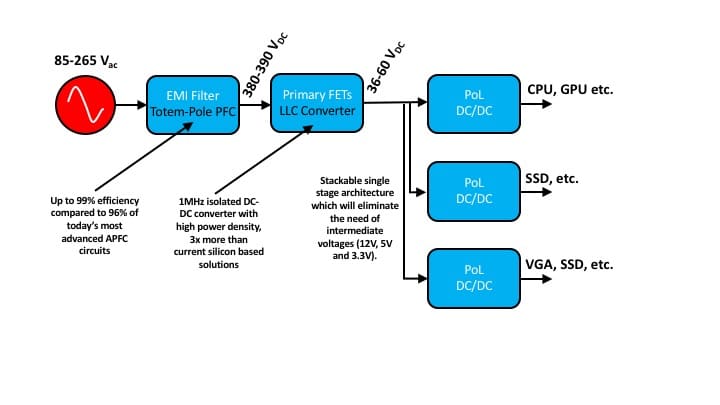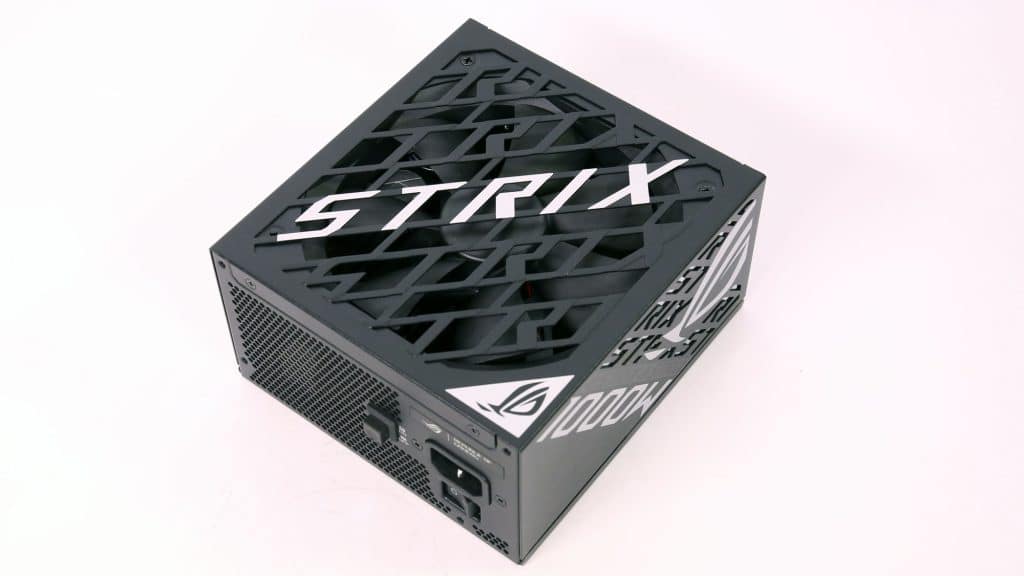The Asus Rog Strix 1000W Platinum is one of the few desktop PSUs using GaN MODFETs instead of the usual MOSFETs, for higher efficiency. It also has an extra voltage sensing system for the PCIe cables, which according to Asus provided increased GPU performance and a smoother gameplay. In this review I will fully evaluate this PSU and look into its strong and not-so-strong aspects.
The Asus Rog Strix 1000W Platinum is (or will be) included in my best ATX v3.x & PCIe 5.x PSU picks article.
The Asus Rog Strix 1000W uses GaN MODFETs instead of MOSFETs in the PSU’s APFC converter for lower energy losses and increased efficiency. Nonetheless, using these FETs only doesn’t necessarily increase efficiency since you have to utilize a suitable design with the appropriate controller. As I noticed, Great Wall, the manufacturer of this PSU, uses a plain Champion CM6502UHHX to control the APFC converter. To fully exploit GaN FETs, you must use a totem-pole PFC converter, which can deliver up to 99% efficiency compared to the 96% efficiency of the most advanced conventional APFC designs, which requires a compatible controller. So, I am unsure whether this Champion controller can exploit the GaN FETs; the test results will show this.
The digitally-controlled Corsair AX1600i is a fine example of a PSU fully exploiting GaN FETs. Below is a schematic of it. I also provided a schematic of a “normal” PSU for comparison.
The big changes that GaN MODFETs bring are the following:
- PFC: Using a totem-pole topology, GaN devices reduce the number of active power switches (FETs) and filtering inductors by 50%. Moreover, a significant increase in switching frequency, which can reach up to 10x, significantly reduces the size of magnetics while improving overall efficiency to over 99% (versus 96% for today’s Titanium-class power supplies).
- LLC Resonant Converter: The DC/DC stage uses GaN’s superior switching characteristics to increase the resonant converter switching frequencies to over 1 MHz. This frequency reduces transformer size while improving power density and efficiency. This is why GaN devices can have ultra-compact dimensions.
- Point of Load (PoL) DC/DC: GaN significantly impacts those converters. First, it enables a single-step conversion from 36-60V to power the PC parts, reducing the number of components needed and enabling smaller dimension PSUs. Additionally, the smaller footprint of a GaN-based solution allows engineers/designers to easily stack the power stages for different load demands and place them close to the load for better/faster transient performance. This means there is no need for multiple rail outputs (12V, 5V, and 3.3V), which currently impose a two-step conversion. The individual components can generate all required voltages from a single voltage output. Nowadays, most components have their own DC-DC converters. But they don’t all use the same voltage. With GaN-based solutions, those components can generate the needed rails from a single, higher voltage rail without increased losses, all while using fewer components in a more compact chassis. However, for such a significant change to take effect, the manufacturers of GPUs, mainboards, etc., will have to cooperate with the PSU designers. This is something that the Intel ATX v12VO spec tried to achieve, with no success so far. The PSU only outputs 12V and 12VSB, and the parts are responsible for adjusting this voltage to their needs. With the use of GaN MODFETs, the required DC-DC converter circuits can be tiny in size so that they won’t affect the form factor of these parts.
ATX v3.x 1000W PSU Reviews:
- Super Flower Leadex VII PRO 1000W ATX v3.1 PSU Review
- 1st Player NGDP 1000W PSU Review
- Cougar GEX X2 1000W PSU Review
- be quiet! Dark Power 13 1000W PSU Review
- Vetroo 1000W ATX v3.0 PSU Review
- FSP Hydro Ti Pro 1000W PSU Review
- Super Flower Leadex VII Gold 1000W (SF-1000F14XG) PSU Review
- Montech Titan Gold 1000W PSU Review
- be quiet! Pure Power 11 FM 1000W PSU Review
- Thermaltake Toughpower GF3 1000W ATX v3.0 PSU Review
- FSP Hydro G Pro 1000W ATX v3.0 PSU Review
- Sharkoon Rebel P20 1000W ATX v3.1 PSU Review
- Seasonic Vertex PX-1000 ATX v3.0 PSU Review
- FSP VITA GM 1000W ATX v3.1 PSU Review
- Manufacturer (OEM): Great Wall
- Max Power: 1000W
- Cybenetics Efficiency: [115V] Cybenetics Platinum (89-91%), [230V] Cybenetics Platinum (91-93%)
- Noise: [115V] Cybenetics A+ (15-20 dB[A]), [230V] Cybenetics A++ (<15 dB[A])
- Compliance: ATX v3.1, EPS 2.92
- Operating Temperature (Continuous Full Load): 0 – 50 °C
- Alternative Low Power Mode support: Yes
- Power 12V combined: 1000W
- Number of 12V rails: 1
- Power 5V + 3.3v: 130W
- Power 5VSB: 15W
- Cooling: 135mm Double Ball Bearing Fan (Champion CF1325L12D)
- Semi-Passive Operation: ✓ (selectable)
- Modular Design: Yes (Fully)
- High Power Connectors: 2x EPS (2x cables), 4x PCIe 6+2 pin (4x cables), 1x PCIe 12+4 pin (600W)
- Peripheral Connectors: 6x SATA (2x cables), 3x 4-pin Molex (1x cable)
- ATX Cable Length: 610mm
- EPS Cable Length: 1000mm
- 12+4 pin PCIe Cable Length: 745mm
- 6+2 pin PCIe Cable Length: 750mm
- Distance between SATA / 4-pin Molex: 115-120mm / 150mm
- In-cable capacitors: No
- Dimensions (W x H x D): 150 mm x 85 mm x 160mm
- Weight: 1.85 kg (4.08 lb)
- Warranty: 10-years
- MSRP (excluding VAT): no info
Power Specifications
| Rail | 3.3V | 5V | 12V | 5VSB | -12V | |
| Max. Power | Amps | 25 | 25 | 83.3 | 3 | 0.3 |
| Watts | 130 | 1000 | 15 | 3.6 | ||
| Total Max. Power (W) | 1000 | |||||






Does anyone know when Asus Thor III 1000w will be released?
I have been using asus thor 1000w p2 for about 1 month. coil whine sound is coming regardless of whether the computer is off or on. the computer case is on my desk 60-70cm away from my ear distance.
coil whine can be from the hardware combination, not only from the PSU. Please note that.
Hi Aris,
Are you going to test the new Asus Thor III 1000w? I ordered the Asus strix ATX3.1 1000w Platinum, but I’m wondering if it’s better to go with the new Thor that was announced today.
In your experience, Great wall vs CWT, which one is better? (As I understood the new Thor is manufactured by CWT)
Hi! Unfortunately Asus marketing doesn’t know my existance. They don’t consider me a KOL (key opinion leader)
https://www.einarexglobal.com/psu/
aris did u tested some einarex psu, because i’ve seen one of them certified by cybenetics gold, i was wonder about the internals of these psu because my fellow worries about it because it’s not listed at the cybenetics websites, would you review it on hwbusters too ?
Hi! We tested them but have not issued the official certs yet.
I have an insider tip that the Rog Thor III 1200W Platinum is also based on the Enchance (a more advanced platform), so you shouldn’t expect much better performance (+ they replaced the fancy fabric-braided cables with mediocre PVC-braided ones, exactly the same as this one Strix).
In general, we can say that Thor III Platinum has achieved the status of a premium power supply.
>In general, we can say that Thor III Platinum has achieved the status of a premium power supply.
Thor III Platinum has lost the status of a premium power supply)
Sad that the GaN mosfets was just a marketing gimmick here. Now I wonder if you can check if this is also the case with the ROG Thor 1200W Platinum III which is, supposedly a more premium plat PSU or if there is no point in it compared to the Strix plat in performance. But also the ROG THOR 1600W Titanium III when compared to the previous Thor Titanium.